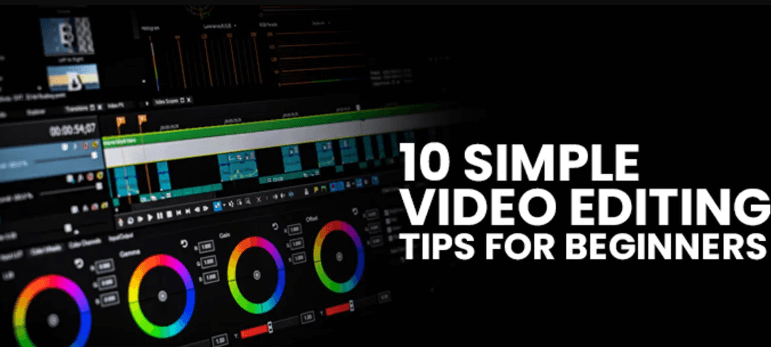10 Must-Know Tips for Efficient Video Editing

In the realm of video editing, efficiency is paramount for achieving polished and professional results. By implementing strategic practices such as organizing your files systematically and mastering keyboard shortcuts, you can significantly streamline your workflow. Additionally, techniques like proxy editing and early peer feedback can play a critical role in enhancing your output quality. However, these foundational tips merely scratch the surface; there are more nuanced strategies that can optimize your editing process further. Considering the demands of modern projects, what are the additional insights that can elevate your editing experience?
Organize Your Files
When embarking on a video editing project, the importance of organizing your files cannot be overstated.
Implement a robust folder structure and standardized file naming conventions to streamline media management. Utilize metadata organization and asset tagging for efficient retrieval.
Incorporate backup solutions and version control to safeguard your work, while project archiving ensures longevity. A disciplined approach enhances creativity and promotes freedom in your editing process.
Use Keyboard Shortcuts
Mastering keyboard shortcuts can significantly enhance your video editing efficiency.
By utilizing shortcut customization, you can tailor commands to suit your workflow, ultimately improving editing speed.
Familiarize yourself with essential shortcuts for tasks such as cutting, pasting, and navigating timelines.
This practice not only streamlines your process but also liberates your creative flow, allowing you to focus more on storytelling and artistry.
Create a Rough Cut
Keyboard shortcuts lay the foundation for a streamlined editing process, enabling editors to focus on the creative aspects of their work.
When creating a rough cut, prioritize storytelling techniques and pacing strategies to establish a compelling narrative. This initial version serves as a flexible framework, allowing for exploration of ideas and rhythms before refining the final product.
Embrace the freedom to experiment.
Utilize Proxy Files
Utilizing proxy files can significantly enhance your video editing workflow by allowing you to work with lower-resolution versions of your footage.
This approach not only improves playback performance on less powerful systems but also facilitates smoother editing processes.
Establishing a clear proxy workflow is essential for maintaining efficiency and ensuring high-quality final outputs.
Benefits of Proxy Editing
Proxy editing offers a significant advantage for filmmakers and video editors, particularly when managing high-resolution footage.
By utilizing proxy files, editors can significantly enhance editing speed, allowing for smoother playback and quicker rendering times. This reduces the strain on hardware, enabling creative freedom during the editing process.
Embracing proxy advantages ultimately streamlines workflows, making projects more efficient and manageable.
Creating Proxy Workflows
To maximize the benefits of proxy editing, establishing a robust proxy workflow is imperative.
Utilize appropriate proxy file formats and configure proxy resolution settings to enhance proxy editing speed.
Implement efficient proxy media management and file organization strategies within your proxy editing software.
Color Code Your Clips
Organizing your video clips through color coding can significantly enhance your workflow and efficiency during the editing process.
Implement Batch Processing
When aiming to streamline your editing workflow, implementing batch processing can drastically reduce the time spent on repetitive tasks.
By utilizing batch file management, you can apply automated editing techniques to multiple clips simultaneously, enhancing efficiency.
This allows you to focus on the creative aspects of your project, freeing up time for innovation and exploration in your video editing endeavors.
Optimize Your Workspace
After streamlining repetitive tasks through batch processing, the next step is to optimize your workspace for maximum productivity.
A strategic workspace layout with essential tools at hand, complemented by ergonomic furniture, enhances comfort.
Utilize dual monitors for efficiency, and implement effective lighting setups alongside soundproofing techniques.
Prioritize distraction reduction through cable management, and personalize your environment to reflect your software preferences and creative spirit.
Keep Audio Levels Consistent
How can you ensure that your video maintains a professional quality throughout? Focus on audio editing by employing volume normalization and audio mixing techniques.
Prioritize voice clarity while minimizing background noise. Use audio plugins to enhance audio transitions, sound effects, and music selection, creating a cohesive sound design.
Consistent audio levels elevate your project and provide a seamless viewing experience for your audience.
Regularly Save Your Work
Regularly saving your work is a critical practice in video editing that can prevent the loss of valuable progress.
Implementing version control allows you to track changes and revert to earlier states if necessary.
Utilizing the auto save feature further enhances this process, ensuring that your edits are continuously protected.
Embrace these strategies for a more liberating and efficient editing experience.
Seek Feedback Early
Seeking feedback early in the editing process is crucial for refining your work.
Collaborating with peers allows for diverse perspectives that can enhance the final product, while embracing constructive criticism fosters growth and improvement.
Collaborate With Peers
The value of peer collaboration in video editing cannot be overstated; it serves as a critical component for refining one’s work.
Engage in brainstorm sessions to explore diverse editing styles and task delegation.
Utilize communication tools for effective idea sharing and establish feedback loops.
Scheduling meetings on collaborative platforms ensures conflict resolution, allowing each project role to contribute meaningfully to the final product.
Embrace Constructive Criticism
Embracing constructive criticism early in the video editing process can significantly enhance the quality of the final product.
Adopting a feedback mindset fosters critical growth through honest assessment and improvement suggestions. Engage in peer review to gain diverse artistic perspectives, ensuring open communication.
This proactive approach allows for constructive evaluation, ultimately refining your work and elevating your storytelling craft to new heights.
Conclusion
Effective video editing hinges on a well-structured approach. By implementing strategies such as file organization, keyboard shortcuts, and early feedback, editors can enhance productivity and creativity. The adage “A stitch in time saves nine” aptly illustrates the importance of proactive measures in the editing process. Prioritizing audio consistency, optimizing workspace, and leveraging batch processing further streamline workflows, allowing for a more focused narrative development. Embracing these principles ultimately leads to polished, engaging final products.




